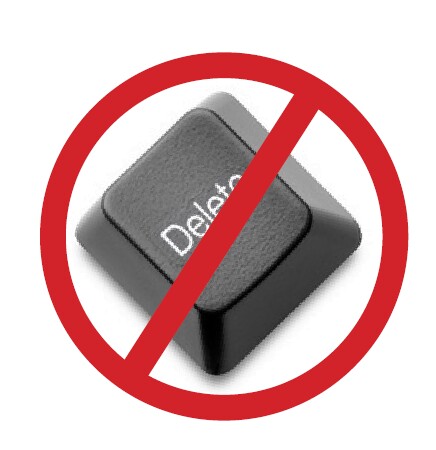 A friend and I were watching a football game on TV when a commercial came on for a paint retailer. At the end of the commercial, my friend said “I don’t trust them for a minute. They don’t look or sound the part at all.” I started thinking about why some companies are trusted and others aren’t. And so I’ll pose the question to you: in today’s marketplace, with people not wanting to be sold to but rather base their purchase decision on many other factors, is your company better off just selling products and services or selling trust along with your products?
A friend and I were watching a football game on TV when a commercial came on for a paint retailer. At the end of the commercial, my friend said “I don’t trust them for a minute. They don’t look or sound the part at all.” I started thinking about why some companies are trusted and others aren’t. And so I’ll pose the question to you: in today’s marketplace, with people not wanting to be sold to but rather base their purchase decision on many other factors, is your company better off just selling products and services or selling trust along with your products?
One of the greatest demonstrations of selling trust came about years ago when Chrysler Corporation was being dragged back from the brink of extinction by its then CEO, Lee Iacocca. Chrysler was seen as having a flawed product and not to be trusted to build a good car. Lesser men would have resorted to selling at the cheapest price with giant discounts and 0% interest. They would have also gone down with the ship by making futile arguments about the features/benefits of the cars. Iacocca rejected this thinking and instead sold his personal guarantee…his promise…by saying “If you can find a better car, buy it.”
So then, what are the few key factors that will make your business such a trusted and relied-on presence in your customers’ lives that they will stay with you – and spend with you – for many, many years?
As I write this, virtually every advertiser, marketer and seller struggles in an un-trusting world. The public has very, very, scorched fingers and badly-bruised confidence. The temptation to overcome this mistrust with stronger product pitches, cheaper prices or deeply discounted fees – did I mention, cheaper prices – is enormous. And dangerous. To do so worsens the fundamental problem of low trust and deprives you of the finances needed to effectively market at all.
Unfortunately, and we all see it in our personal and business lives, there are bunches of companies out there who are “hit and runners.” They’re more in the business of getting customers to make sales rather than making sales to get customers. The first provides only income. The second provides income and equity. It’s sort of like the difference between dating and a long-term marriage. It’s about being there and having the other person’s back. That the other knows you care about them. That you find ways to stay interesting and relevant over the years. Sad but true, most marketers don’t really think about a long-term marriage with customers. They take it for granted or give it no importance. They’re focused on income not equity. Like you, I buy things from stores or service providers where not even a feeble attempt at creating an ongoing relationship is made. I think the thinking is “We did OK, he’ll be back.” Well, maybe and then again maybe not.
So, what can companies do from a marketing standpoint to start the process of building trust within the minds of their current and prospective customers? Here are eight thought-starters:
So, while we as marketers understand that we’re in the business of helping drive revenue for the company among other challenges, let’s not lose track of the fact that it’s always easier to derive sales from an existing customer versus that of a new customer. And that only happens if they trust you. And they’ll only trust you if you look and act the part. Don’t have your company be a “poser”…you’ll be found out!
by Rolf Gutknecht, Agent of Change (c) 2012
A friend of mine sent me a video by email last week that, as a marketer, I loved. It was one of those ‘old school’ videos featuring “America’s best salesman”…Elmer Wheeler, who’s message is as relevant and meaningful today as it was when he delivered in the 60’s. After watching it a number of times, and because of the subject matter, it made me think of an interesting way to look at what the brand experience is all about.
[youtube=http://www.youtube.com/watch?v=UW6HmQ1QVMw]
So here goes:
Imagine that you and your significant other decide to go to a well-known, fancy-schmancy steakhouse for a special night out dinner. Have that in your mind? Good. Now, picture another steakhouse of similar reputation. Both of the steakhouses prepare the same quality of steak but with one difference….. whereas the first restaurant makes a steak the way it’s supposed to be made (a thick clean cut, placed on the center of the plate) and presented with some tasty vegetables nicely positioned on the side and professionally put on the table, the second restaurant has a similar plate presentation but with no steak on it. Their steak gets delivered just a minute later on a hot stone tablet to your table…simmering and sizzling. The waitress presents the steak with elegance, and sprinkles some salt and pepper on top. While the aroma of the steak makes your mouth start to water and the sizzle gets your full attention, she begins to tell the story of the family who own the vineyard of the wine you selected. What a different brand experience that is! Same item, same quality, different way to engage the consumer. The difference isn’t about the steak but rather about the sizzle.
So why does the “sizzle” matter?
1. Anyone can make good steak
As we know, product or service quality is a fragile thing. No matter how many patents you have, how well you have integrated your supply chain and perfected your quality standards, no matter how much money you spend on R&D, anyone who really, really wants to go after you will eventually copy what you do or make and perhaps even perfect the product you so passionately protected.
2. The sizzle is a difficult thing to copy
Branding, brand equity and brand engagement are difficult to copy. They are strongly linked to your brand, and your brand alone. The depth of everything “surrounding” the product is complex, deep and interwoven with stories, emotions, associations, you name it…all those good things that make a brand unique!
3. The sizzle adds the emotional layer
Back to the restaurant example: Guess what? People will come back for more. Not just for the steak, but for the feeling they get when they are IN that experience. Human beings thrive on emotions, and seek repeat of pleasure.
Now, I’m not suggesting for one minute to only focus on the sizzle. Without that good, juicy, perfectly cut and excellently cooked filet mignon steak there is no reason to add sizzle in the first place! The sizzle is the icing on the cake; without cake there is no need for the icing.
Selling the sizzle and not the steak is something good marketers have known since forever. Give your customers the meal that they desire…and they will come back for it time and time again.
by Rolf Gutknecht, Agent of Change (c) 2012
I’m not sure about you, but in the deluge of emails that comes my way each and every day, it’s real easy start deleting them without even thinking about whether there’s content that might make my life and that of my clients easier and better. So, I stopped doing that about  6 months ago and now take the time to open each one and at the very least scan for interesting info. Maybe I’ll see something about trends, or research data, facts, or a tidbit about helpful hints. Without doing so, I’d miss out on stuff I should know about and, respectfully said, that’s probably the case with you as well.
6 months ago and now take the time to open each one and at the very least scan for interesting info. Maybe I’ll see something about trends, or research data, facts, or a tidbit about helpful hints. Without doing so, I’d miss out on stuff I should know about and, respectfully said, that’s probably the case with you as well.
Well, with your indulgence, I wanted to share with you 10 pieces of information that you may not be aware of which in turn will help you grow your business by seizing on untapped revenue-producing opportunities. So, here goes:
As I said, it’s easy to delete a bunch of good information that comes your way because of time constraints, being short staffed or being overwhelmed with email after email. But this is all good information that I received and looked over before I hit the delete key. If you’ve read this far, you’ve made the same thoughtful decision as well.